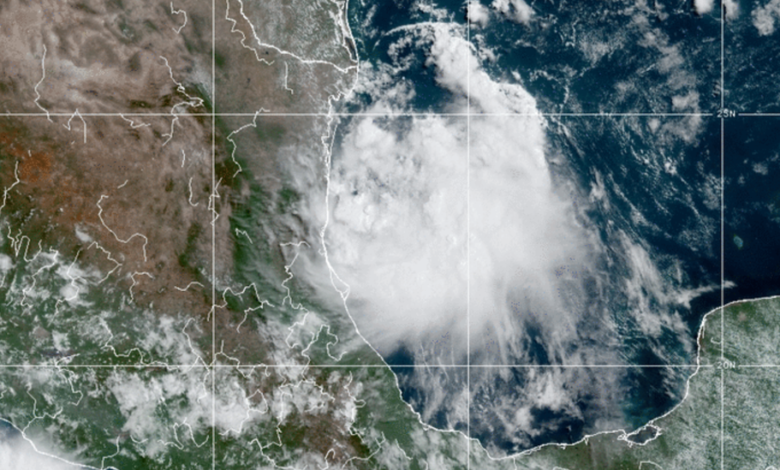Parts of Mexico and Texas Are Under a Tropical Storm Warning

Parts of northeastern Mexico and southern Texas were under a tropical storm warning on Saturday while a potential tropical cyclone could bring rain and storm surge flooding.
The National Hurricane Center said in an update early Saturday afternoon that a disturbance in the Gulf of Mexico “could still strengthen slightly” and estimated it had a 50 percent chance to become a tropical storm in the next 48 hours.
The warning was in effect for the Gulf Coast from Boca de Catan to the mouth of the Rio Grande in Mexico and the lower Texas coast from Port Mansfield to the mouth of the Rio Grande, the center said.
Forecasters said the region could get as much as three inches of rain, with some areas getting up to five inches through Sunday morning. Flash flooding was possible.
“Most of the rain will fall in isolated to scattered showers/storms rather than steady bands,” National Weather Service forecasters at the Brownsville/Rio Grande Valley, Texas, office said.
Laura Farris, a meteorologist at the office, said in an interview that “the threat is decreasing” and that forecasters would reassess conditions later in the afternoon.
She said that tropical storm force winds will be isolated and that rainfall amounts were likely to be no more than half an inch, though some areas might get slightly higher amounts. As the system moves inland, it becomes more disorganized, which helps weaken it, Ms. Farris said.
The coast of northeastern Mexico could see storm surges up to one foot, the National Hurricane Center said. Forecasters also warned that swells in the area could cause life-threatening surfs and rip currents.
If the storm picks up power, it could be called Danielle, the fourth named storm of the 2022 Atlantic hurricane season. This year’s has a chance of becoming the seventh consecutive “above normal” hurricane season, according to the National Oceanic and Atmospheric Administration.
So far, the hurricane season has been mostly quiet; no major storms have developed in the Atlantic. The three storms this year all lasted less than 48 hours and had minimal impacts.
But there’s still time in the season for more storms.
The Atlantic hurricane season officially lasts from June 1 to Nov. 30, with its peak coming between mid-August and October, when 90 percent of tropical storm activity usually occurs. Warmer ocean waters also help contribute to more activity.
Each year, the link between hurricanes and climate change becomes clearer. Hurricanes have become stronger worldwide over the past four decades, according to data.